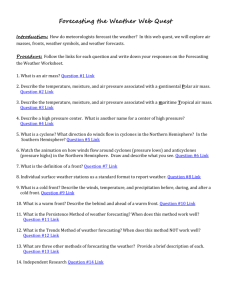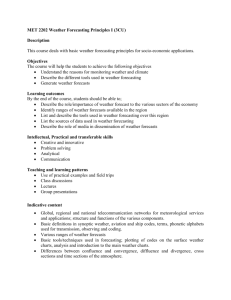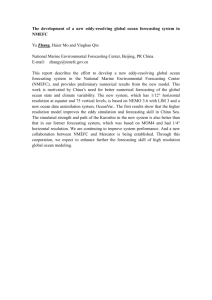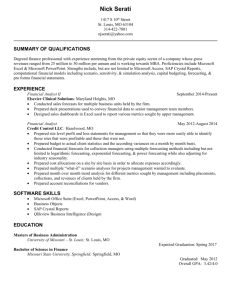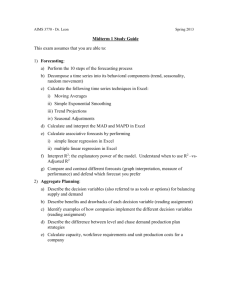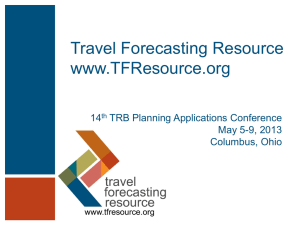MET 3202 Weather Forecasting Principles II
advertisement
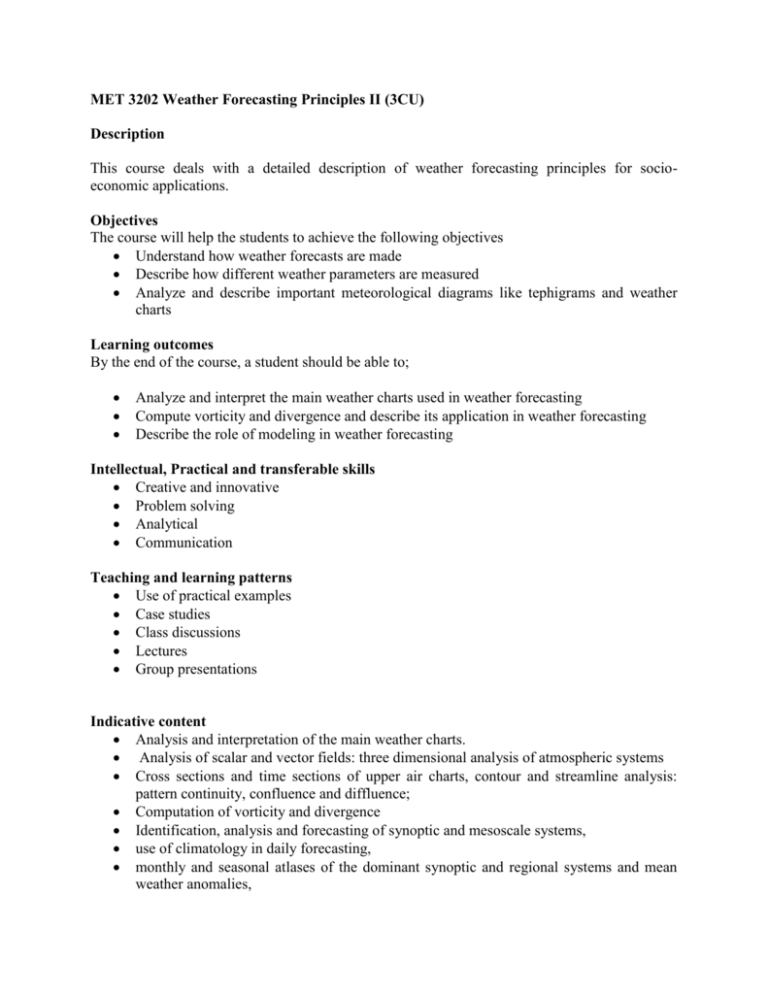
MET 3202 Weather Forecasting Principles II (3CU) Description This course deals with a detailed description of weather forecasting principles for socioeconomic applications. Objectives The course will help the students to achieve the following objectives Understand how weather forecasts are made Describe how different weather parameters are measured Analyze and describe important meteorological diagrams like tephigrams and weather charts Learning outcomes By the end of the course, a student should be able to; Analyze and interpret the main weather charts used in weather forecasting Compute vorticity and divergence and describe its application in weather forecasting Describe the role of modeling in weather forecasting Intellectual, Practical and transferable skills Creative and innovative Problem solving Analytical Communication Teaching and learning patterns Use of practical examples Case studies Class discussions Lectures Group presentations Indicative content Analysis and interpretation of the main weather charts. Analysis of scalar and vector fields: three dimensional analysis of atmospheric systems Cross sections and time sections of upper air charts, contour and streamline analysis: pattern continuity, confluence and diffluence; Computation of vorticity and divergence Identification, analysis and forecasting of synoptic and mesoscale systems, use of climatology in daily forecasting, monthly and seasonal atlases of the dominant synoptic and regional systems and mean weather anomalies, Model assembling in forecasting, Contribution of vertical motion to development of tropical weather systems. Practicals: Analysis of weather charts and tephigrams Assessment Method The assessment method is structured to include course work, and final examination. Course work consists of assignments, reports, practicals and tests and accounts for 40% of the final grade. The final examination will account for 60% of the final grading Core Reference materials Sverre Pettersen (1956): Weather Analysis and Forecasting, Volume 1, Published by McGraw-Hill. WMO Bulletin (1997): Workbook on Numerical weather Prediction in the Tropics, Volume 46




